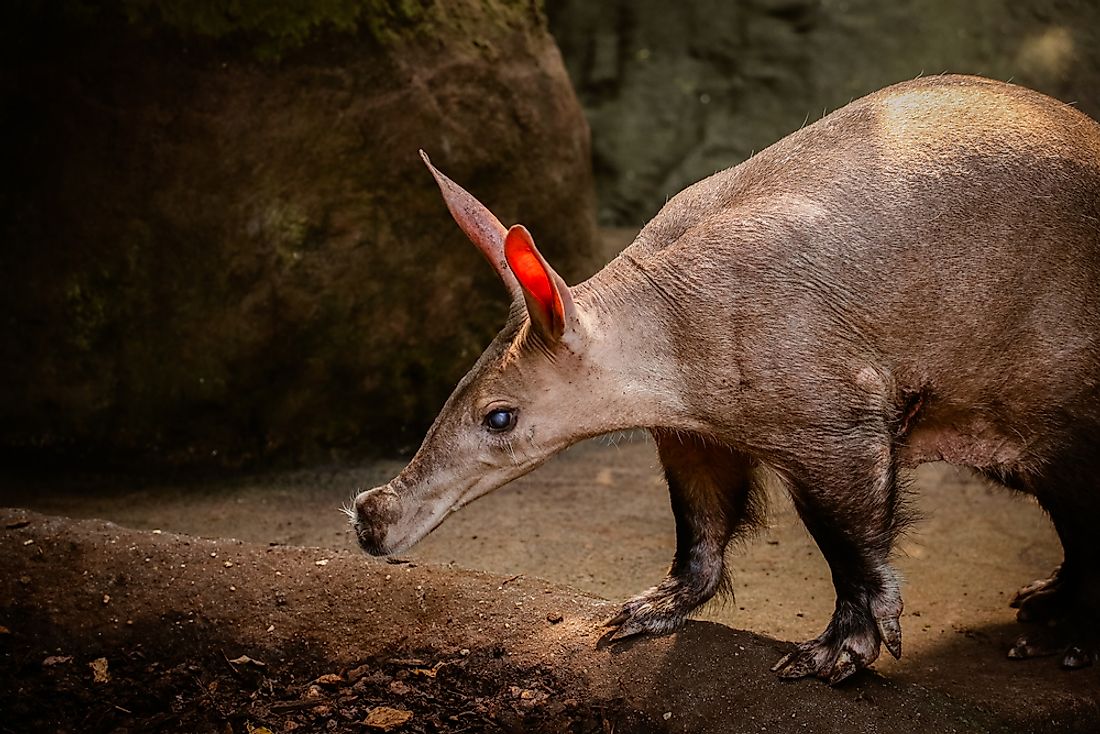What is a Living Fossil?

The term "living fossils" was first used in 1859 by Charles Darwin in his publication, “On the Origin of Species”. A living fossil is an existing organism that closely resembles an extinct organism that is only known from fossil archives. Living fossils tend to portray a slow rate of progress compared to other organisms, making them identifiable over long periods of time. The average time between when a living fossil first appears is longer than that of ordinary organisms. There are many examples of living fossils in the Kingdom Animalia such as Aardvark (Orycteropus afer), Amami rabbit (Pentalagus furnessi) and Pelicans (Pelicanus).
What is a Living Fossil?
Evolution and Living Species
Although surviving, living fossils do not retain the primitive features of their ancestors. Due to adaptation to the environment over time, the behaviour and survival instincts of living fossils is much more advanced than their ancestors. Scientists argue that living fossils, despite rapid specialization, exhibit non-adaptive radiation (very low rates of ecological and phenotypic evolution) therefore giving them a longer staying power.
Characteristics of Living Fossils
Living fossils first appeared millions of years ago, and are considered to be from the aboriginal period based on their appearance features. The fossils do not need to look the exact same as their non-existent relatives, they just need to share the same lineage and possess both variances and similarities. The fossils are believed to have survived an earlier period in which some organisms became extinct because of their ability to adapt into the environment.
Examples of Living Fossils
Aardvark (Orycteropus afer)
The aardvark, also known as the African pig or the anteater, is a nocturnal mammal that is indigenous in parts of Sub-Saharan Africa. The name aardvark means earth pig in Afrikaans. Orycteropus stands for burrowing foot, and afer means Africa. The Aardvark is the only known living species from the order Tubulidentata. A long, pig-like nose gives the animal the ability to sniff ants and termites for food. Sharp claws and powerful legs aid in hunting and the rearing of its young ones. The closest living relatives of the Aardvark include the elephant shrews and golden moles. Aardvarks first appeared towards the end of Paleocene age.
Amami rabbit (Pentalagus furnessi)
The Amami rabbit (Ryukyu) is a primitive, dark-furred rabbit found in the Amami Oshima and Toku-no-shima Islands of Japan. It is the remnant of prehistoric rabbits that were once found in Asia. The rabbit has short rear legs, large and curved claws for excavating and climbing, a massive body and small ears. The animals find their home in young forested areas for protection and food purposes. Because of their ability to only reproduce twice a year to one or two offspring, the Amami rabbit is considered a vanishing species with an estimated 3000-5000 left in the world. Out of fear of predators, the young are hidden during the day and natured at night.
Elephant Shrew (Macroscelidea)
Elephant shrews are small, four-legged insectivorous mammals indigenous to Africa. The name “Elephant” comes from the striking resemblance of its long nose to the trunk of an elephant. Others prefer to call them jumping shrews or sengis from the African Bantu languages. Elephant shrews have no particular habitat as they are found in deserts and forests and are considered among the fastest small mammals. These mammals have scales on their tails, long noses and hop like rabbits. Just like elephants, elephant shrews use their trunks for feeding purposes. They are difficult to catch, hard to see, perfect in camouflaging and very agile.
Pelican (Pelicanus)
Pelicans are large water based birds with long beaks and large throats. Their digestive system can drain water from scooped up nourishment before swallowing. They are habitually pale-feathered and are closely related to shoebills. Pelicans came into existence over 30 million years ago, and are frequent water bodies feeding on fish and sometimes snakes. Pelicans collaborate in flocks during feeding, hunting, migration, and breeding.
Red Panda (Ailurus fulgens)
The red panda, also known as the lesser panda, red bearcat or the red cat-bear, is a mammal found in the Himalayas and parts of China. Less than 10,000 Red Pandas remain, making it an endangered species. Closely related to the giant panda, the red panda has brownish red fur, a long tail and walks wobbly due to its front pair of legs being shorter. Red pandas feed on bamboo, eggs, birds and insects. Known to live a solitary life, the animals are inactive during the day but become active at night.
Status of Living Fossils
Most living fossils are endangered and their numbers continue to decline. Although there have not been any proper conservation efforts to protect the endangered species, many governments have put policies in place to help protect the animals. Just like their ancestors, living fossils have adapted strict survival methods giving them the ability to protect themselves from natural forces as well as poachers.
What is a Living Fossil?
| Rank | Animal | Scientific Name |
|---|---|---|
| 1 | Aardvark | Orycteropus afer |
| 2 | Amami rabbit | Pentalagus furnessi |
| 3 | Chevrotain | Tragulidae |
| 4 | Elepahant shrew | Macroscelidea |
| 5 | Laotian rock rat | Laonastes aenigmamus |
| 6 | Okapi | Okapia johnstoni |
| 7 | Opossums | Didelphidae |
| 8 | Capybara | Hydrochoerus hydrochaeris |
| 9 | Red panda | Ailurus fulgens |
| 10 | Pelicans | Pelecanus |
| 11 | Snapping turtle | Chelydra serpentina |
| 12 | Giant salamander | Cryptobranchus |
| 13 | Horseshoe crab | Limulus polyphemus |
| 14 | Alligator snapping turtle | Macrochelys temminckii |
| 15 | Hula painted frog | Latonia nigriventer |







